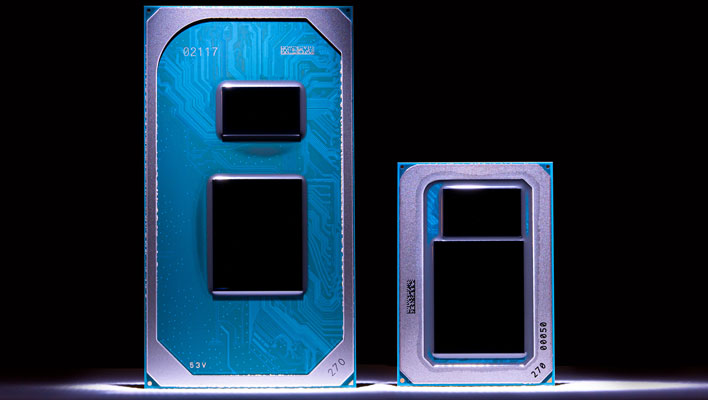Intel Quietly Launches Tiger Lake-B 10nm Desktop Processors With Blistering Boost Clocks

If you thought Alder Lake-S would be Intel's next desktop processor launch, think again. There's a new CPU line that was launched without any boisterous announcement or fanfare, that being Tiger Lake. Yes, Tiger Lake already exists, but not just in mobile form anymore—Intel ported its Tiger Lake architecture over to the desktop.
There are four new SKUs, each with a new "B" suffix. Well, the top model carries the "KB" suffix, because it is also an unlocked processor. So what does the B designation mean? In a statement, Intel essentially confirmed speculation that the B means BGA, as these new chips are ball grid array parts that are soldered directly to the motherboard, rather than LGA (land grid array) like most of its modern desktop processors.
These are the SKUs...
- 11th Gen Intel Core i9-11900KB
- 11th Gen Intel Core i7-11700KB
- 11th Gen Intel Core i5-11500B
- 11th Gen Intel Core i3-11100B
For the casual consumer, wading through Intel's model names, architecture codenames, and generational labeling can be confusing. In this instance, Intel is essentially reusing its 12th Gen Core "Rocket Lake" model numbers, at least for the Core i5 SKUs and up. However, chips like the 11th Gen Core i9-11900KB should not be confused with the 12th Gen Core i9-11900K, because they are two entirely separate architectures.
Potential confusion aside, these are interesting additions, as found in Intel's ARK database. They are manufactured on a 10-nanometer node and feature some impressive boost clocks, as well as onboard graphics. As shown above, Intel's top model, the Core i9-11900KB, is an 8-core/16-thread desktop Tiger Lake processor with a 3.3GHz base clock and 4.9GHz max turbo frequency, and can hit 5.3GHz via Thermal Velocity Boost. It also sports 24MB of L3 cache, and has a 65W TDP. Intel lists the recommended customer pricing at $417.
The Core i7-11700B, meanwhile, is also an 8-core/16-thread CPU, but with a 3.2GHz base clock, 4.8GHz max turbo clock, 5.3GHz Thermal Velocity Boost frequency, 24MB of L3 cache, and a 65W TDP. There is no mention of the recommended customer pricing.
Moving down the list, the Core i5-11500B is a 6-core/12-thread chip with a 3.3GHz base clock, 4.6GHz max turbo clock, 5.3GHz Turbo Velocity Boost frequency, 12MB of L3 cache, and a 65W TDP. Like the Core i7 part, Intel has not listed a price point.
Finally, the Core i3-11100B is a 4-core/8-thread CPU with a 3.6GHz base block, 4.4GHz max turbo clock, 5.3GHz Turbo Velocity Boost frequency, 12MB L3 cache, and a 65W TDP. And once again, there is no reference to pricing.
Those are some relatively fast clock speeds across the board, especially the 5.3GHz Turbo Velocity Boost rating for all four chips. And on the graphics side, the Core i9, i7, and i5 models each sport onboard Xe graphics with 32 execution units, clocked at 350MHz to 1.45GHz. The Core i3 part, meanwhile, features Xe graphics with 16 execution units and is clocked at 350MHz to 1.4GHz.
Where will these show up?
"Intel has partnered with customers interested in expanding their product portfolio with enthusiast, small form-factor desktop designs. The Intel Core i9-11900KB processor is a BGA solution built with unique specifications and performance specifically for these designs," Intel said in a statement.
We can safely assume the same explanation applies to the other three Tiger Lake-B SKUs, and not just the Core i9-11900KB. It will be interesting to see what kinds of designs Intel's hardware partners concoct, with access to these new desktop parts. These could power some relatively stout mini PCs and compact SFF systems that could prove intriguing, if priced right.


